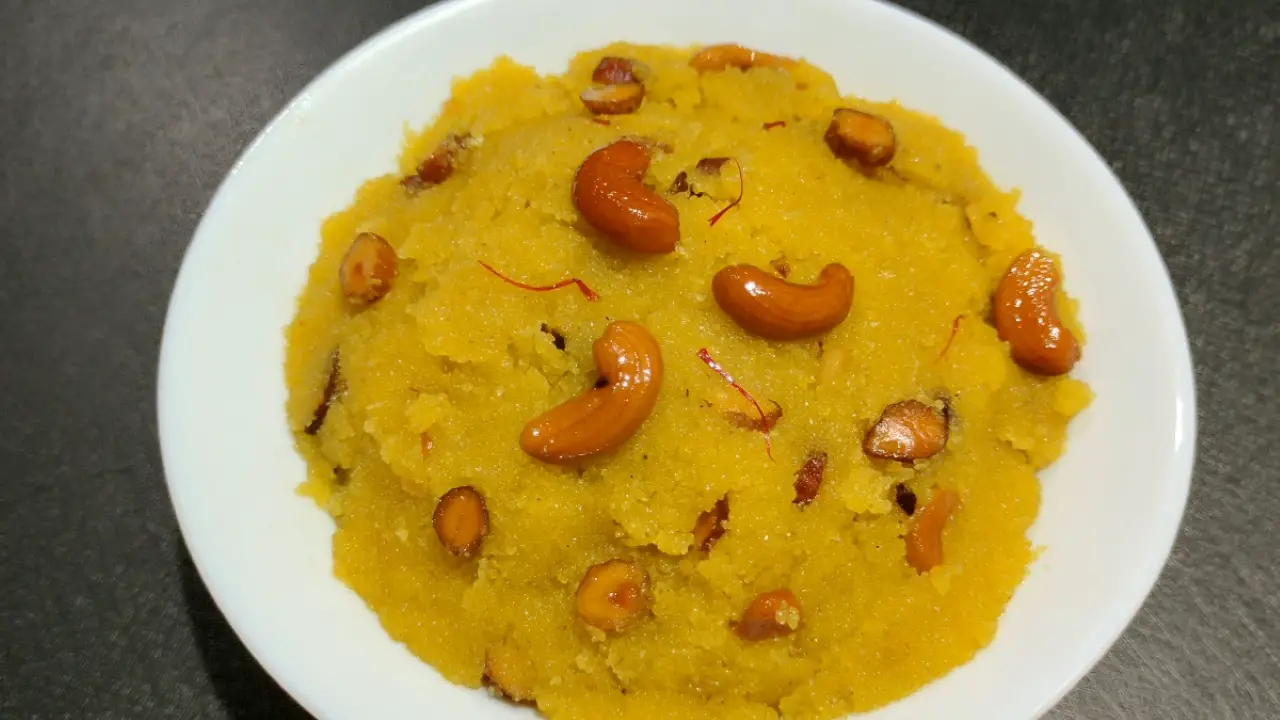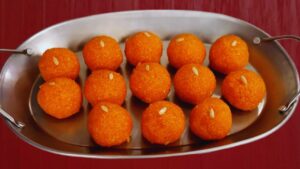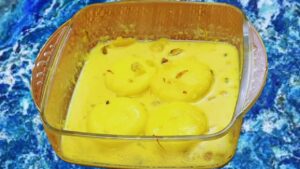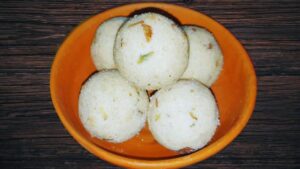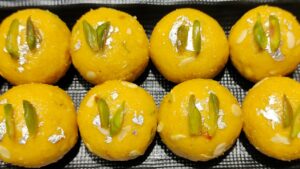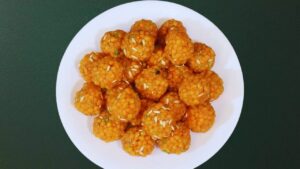Suji Halwa, also known as Semolina Halwa, is a popular Indian dessert made from semolina (suji/rava), ghee (clarified butter), sugar, and water.
It is a sweet and aromatic dish that is widely enjoyed in India and other parts of South Asia.
This delightful dessert holds a special place in Indian cuisine and is often prepared to celebrate festivals, gatherings, or as a comforting treat for loved ones.

Key Takeaways:
- Suji Halwa is a beloved Indian dessert known for its rich, nutty flavor and sweet aroma.
- It is made from simple ingredients, with semolina (suji/rava) as the star ingredient, roasted in ghee to enhance its nutty essence.
- The combination of ghee, sugar, and water creates a smooth texture in the halwa.
- Suji Halwa is often flavored with cardamom and garnished with assorted nuts for added taste and visual appeal.
- It can be served on its own or paired with accompaniments like poori, moong dal khichdi, or masala chai for a delightful dining experience.
The Ingredients

- Suji or semolina: 200 gms (fine grain)
- Sugar: 175 gms
- Ghee or clarified butter: 200 gm
- Besan or gram flour: 1 tbsp
- Kesar or saffron: 1 pinch
- Cardamom powder: ½ tbsp
- Almond nuts: 2 tbsp (chopped)
- Cashew nuts: 2 tbsp (broken)
- Pistachios: 1 tbsp
How to Make Suji Halwa (Step by Step Images)?
1. Add 100 gms of ghee into the wok. Let it heat until hot.
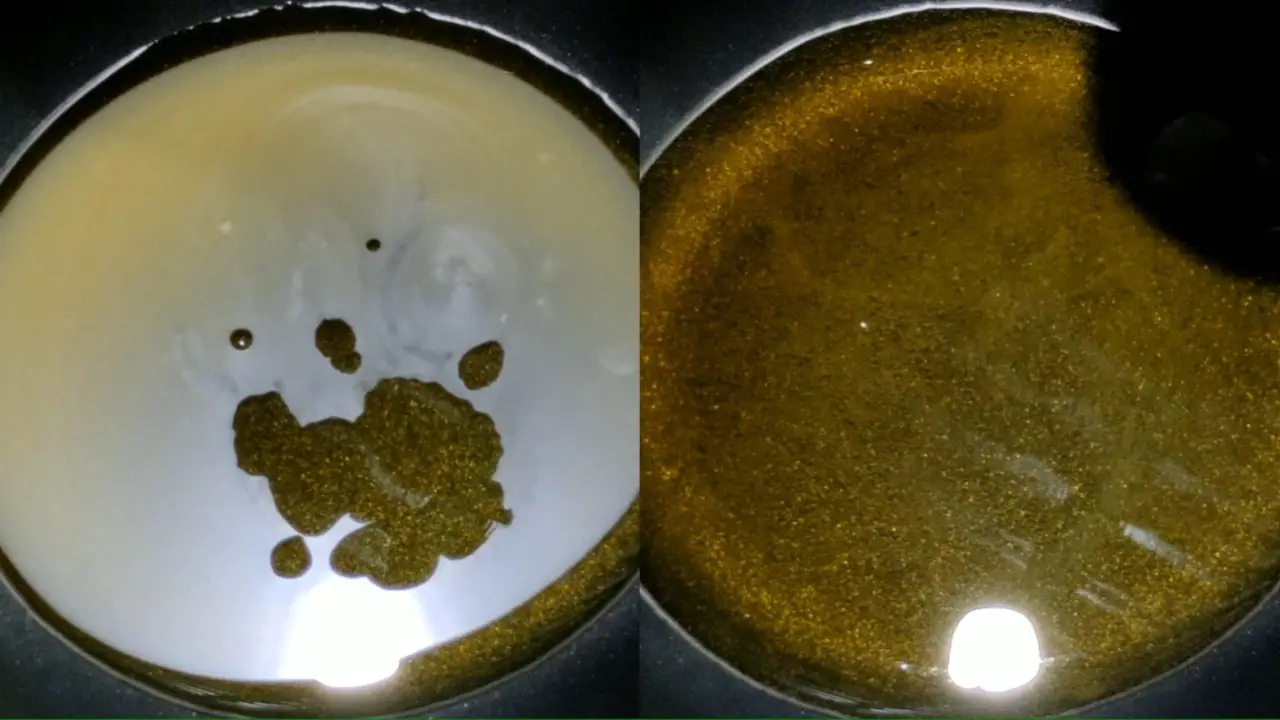
2. Add the suji or semolina.
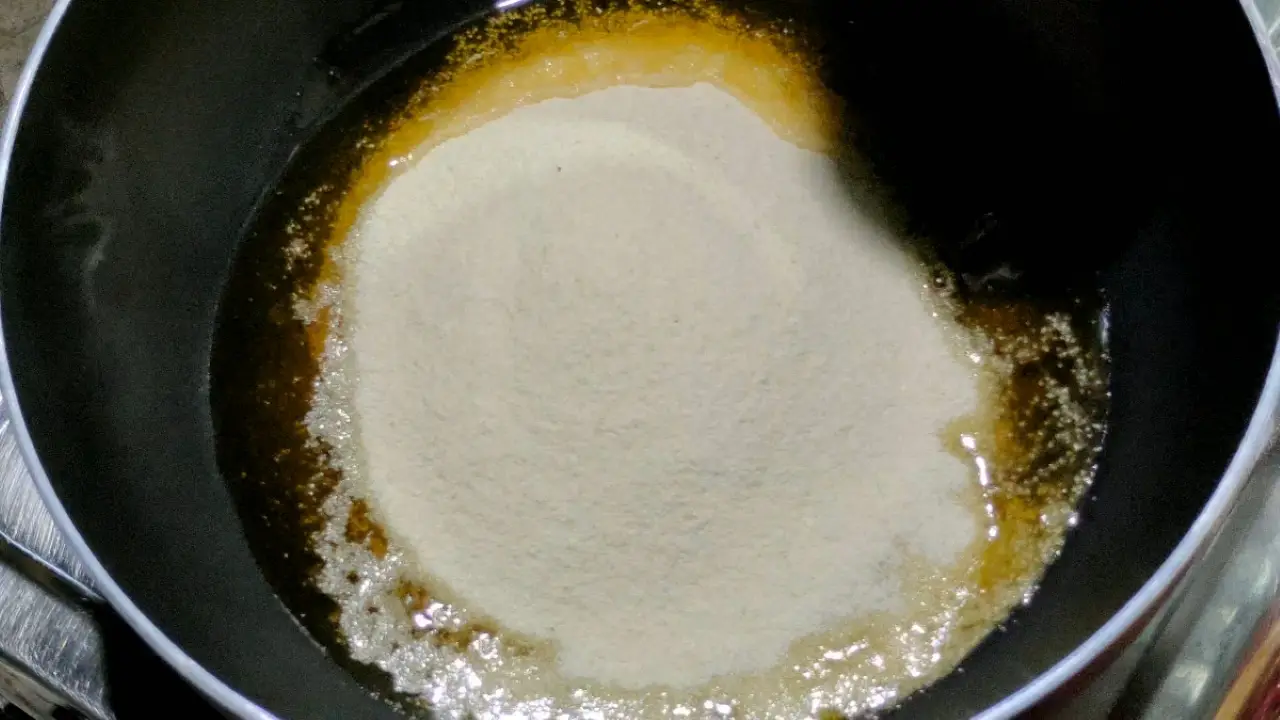
3. Stir and mix the semolina and ghee very well. Do not let the semolina turn red or brown while cooking. Stir it until the raw smell of semolina disappears.
(Pro tip: Heat the ghee so that when you add the semolina, it becomes fluffy.)
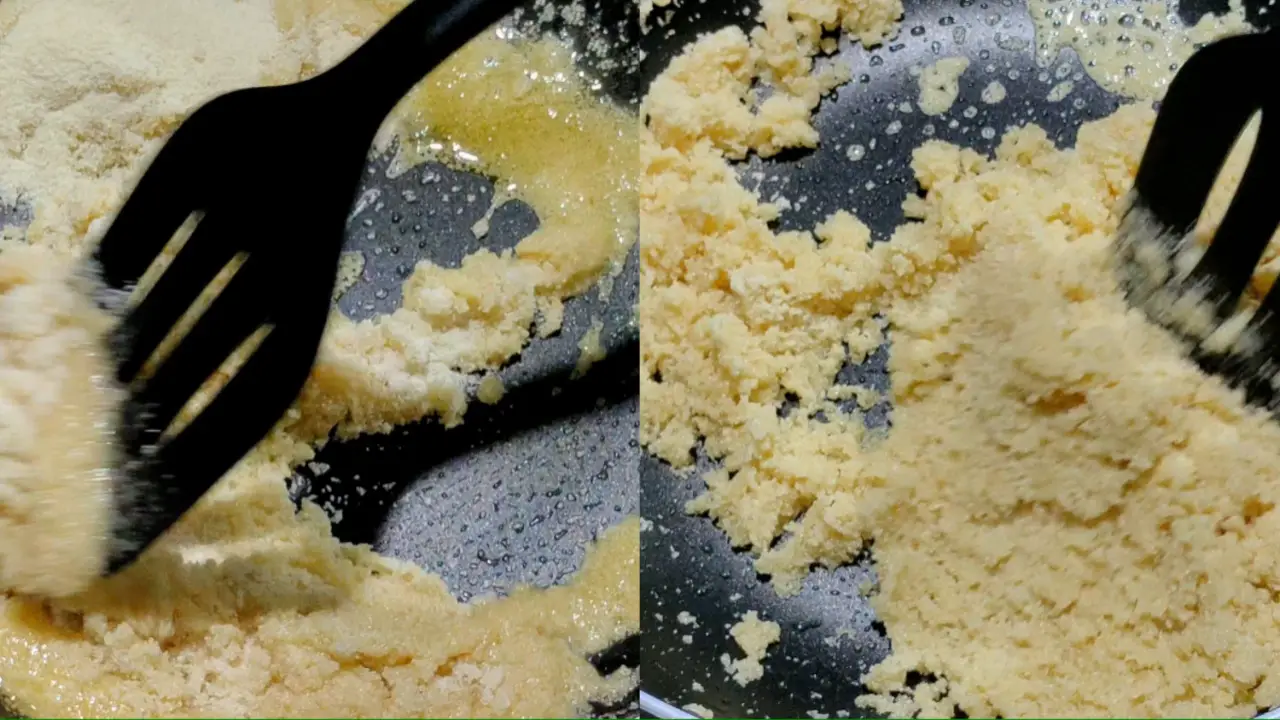
4. Stir the semolina for 1 min on low heat. The semolina will turn gooey and release the oil without any change in color.

5. Add 1 tbsp besan or gram flour.
(Pro tip: In the sweet shop, they use gram flour or wheat flour. Gram flour simply enhances the aroma.)
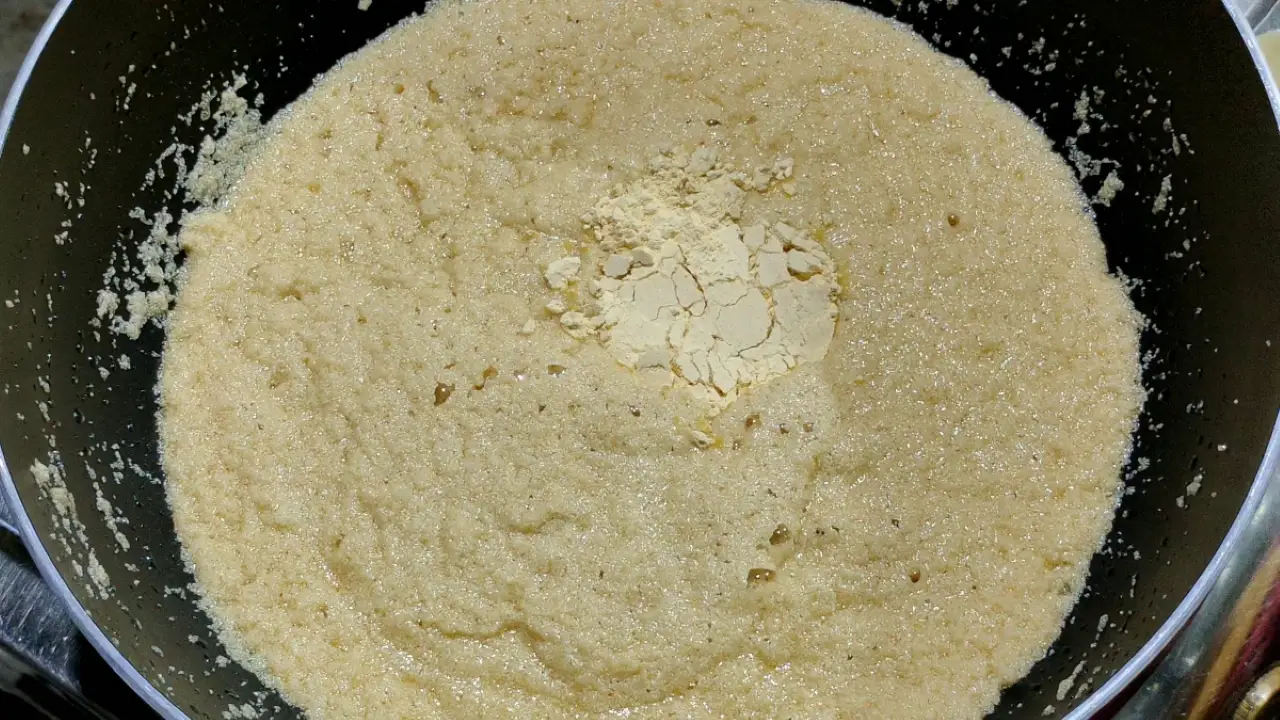
6. Mix gram flour with suji.
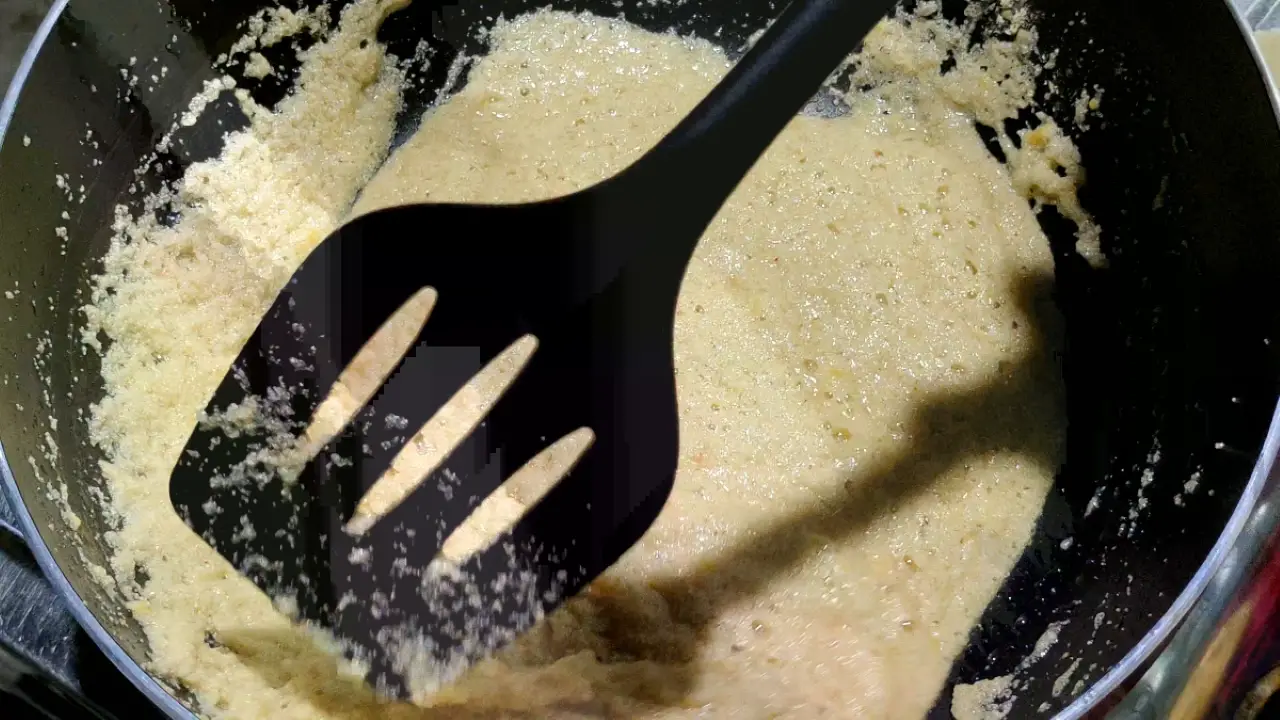
7. Add the almonds, cashews, and pistachios into the mixture. Stir everything very well. Do not fry the nuts separately.
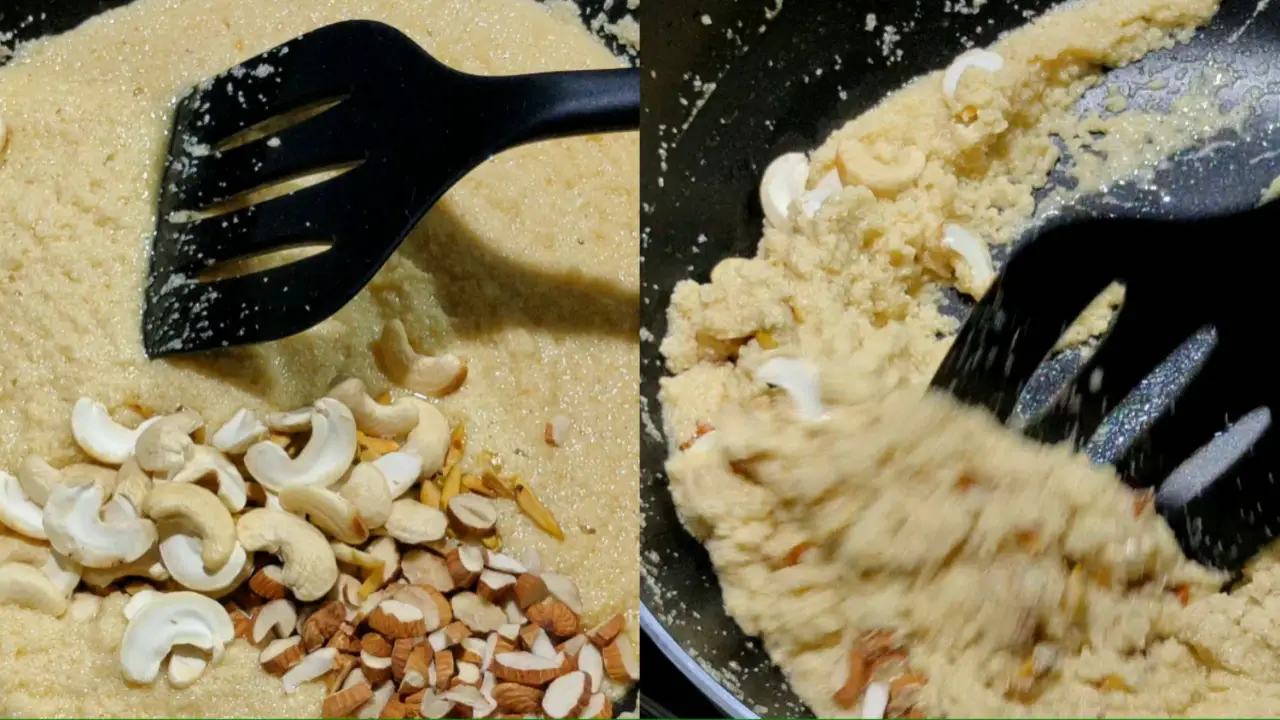
8. Take a saucepan and heat it on another gas stove to prepare the water. Pour three bowls (the same bowl containing semolina) of water and heat it to simmer in a separate saucepan.
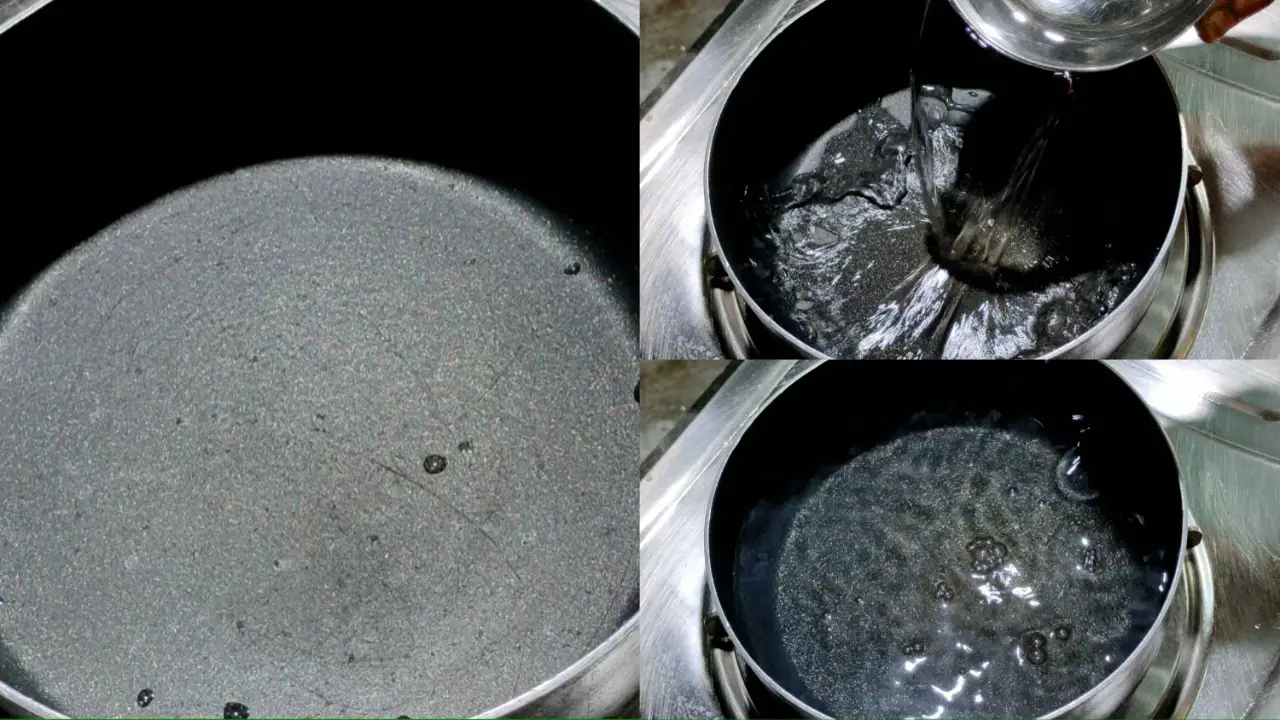
9. Add the kesar or saffron and cardamom powder. Add 1 tbsp ghee. Boil the water.
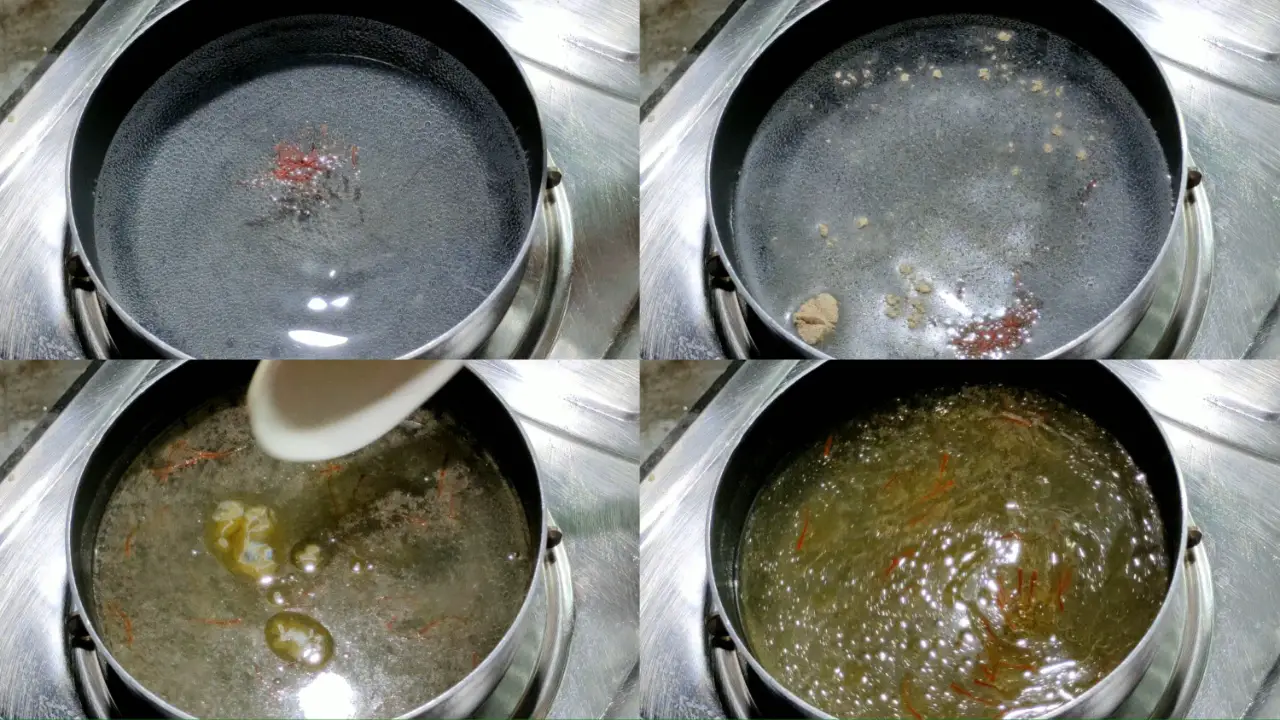
10. The semolina is almost cooked; it is releasing oil. Now add the hot water slowly into the mixture and stir it at the same time. It’ll sizzle and splash.
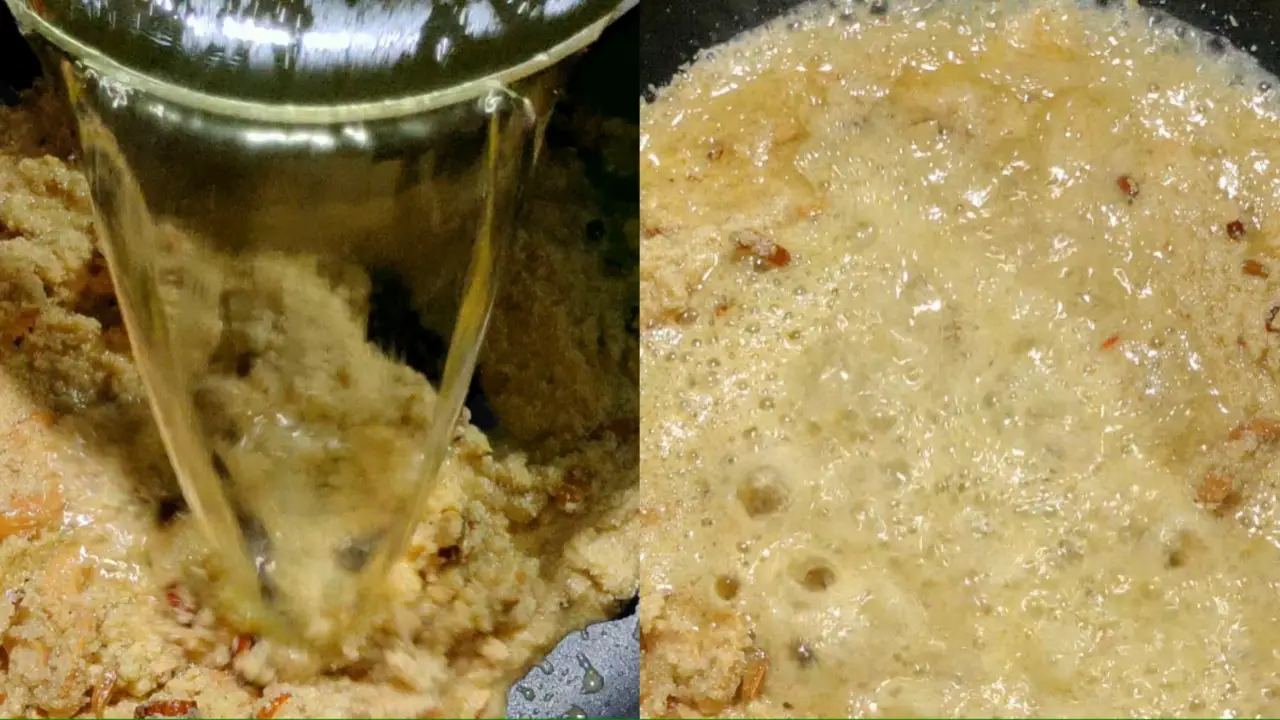
11. Embrace stirring. Gradually add the water and stir it continuously. This will demand patience. The semolina will transform from crumbly to plump and fluffy.
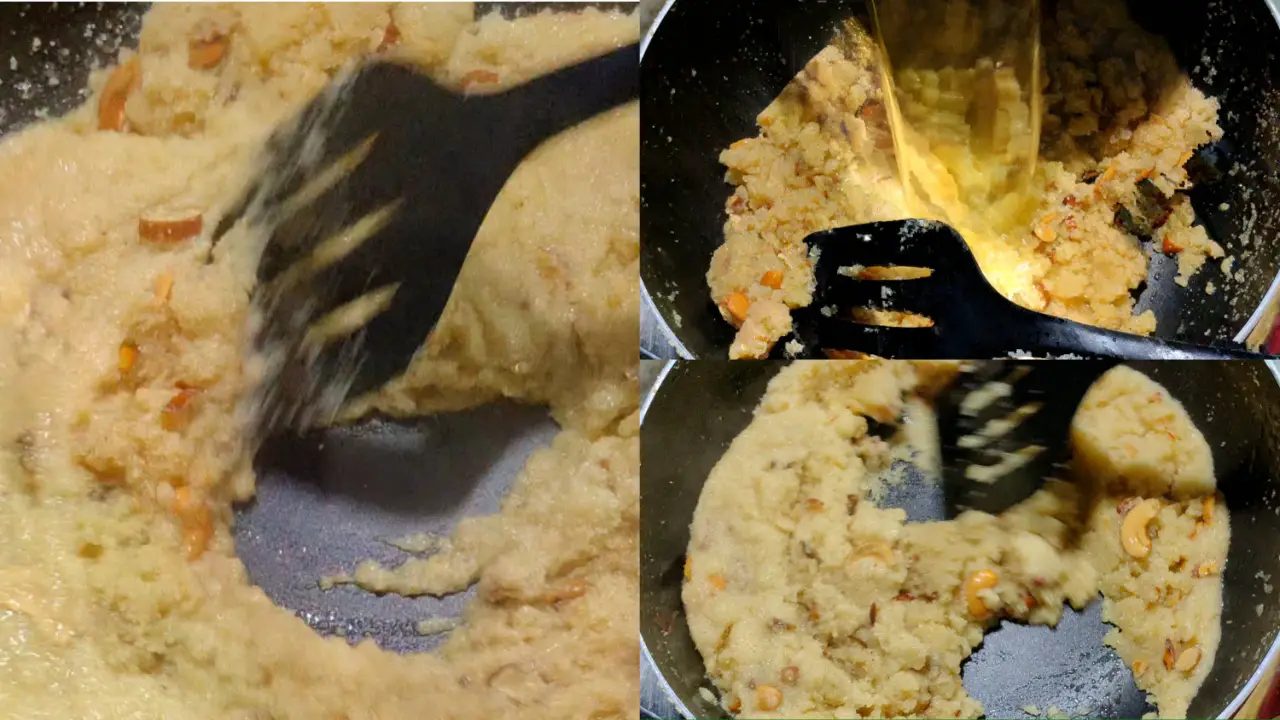
12. Add sugar. Continue to stir until the sugar melts. Once you notice the ghee starting to separate from the halwa on the edges, turn off the heat.
(Pro tip: If you don’t use saffron, add food color.)
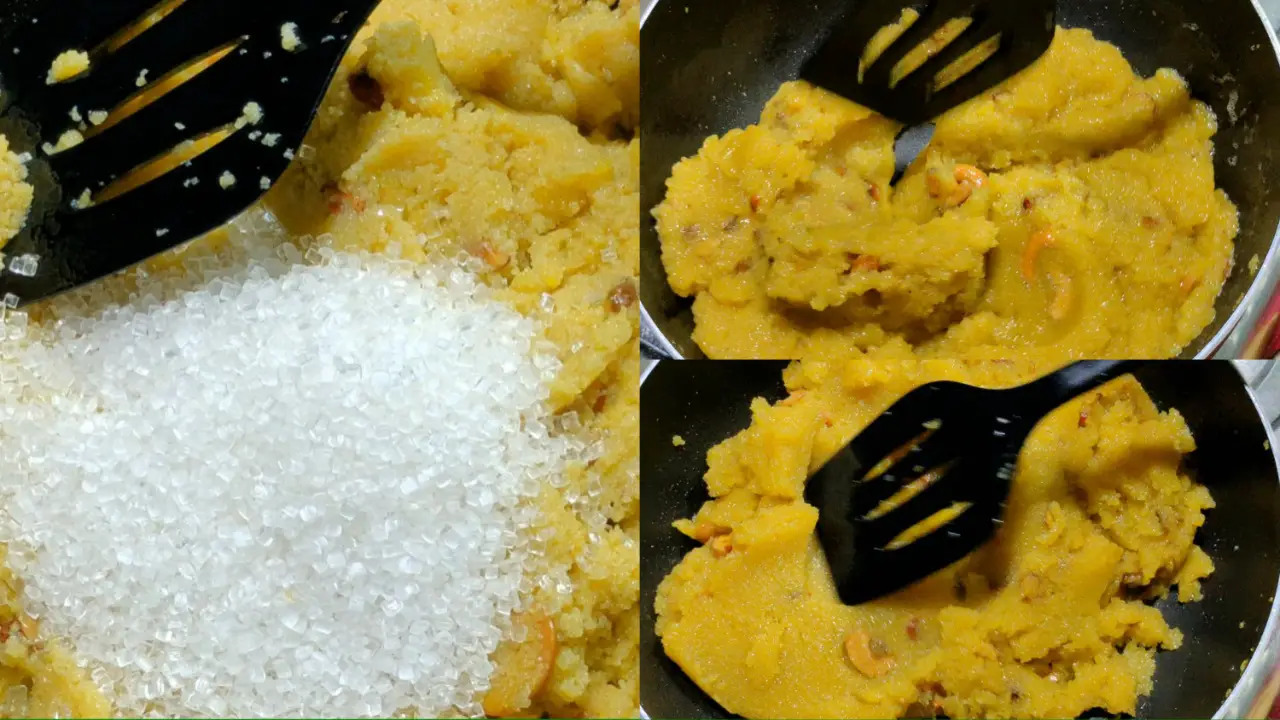
13. Drizzle ½ tbsp ghee over the halwa. Mix it well.
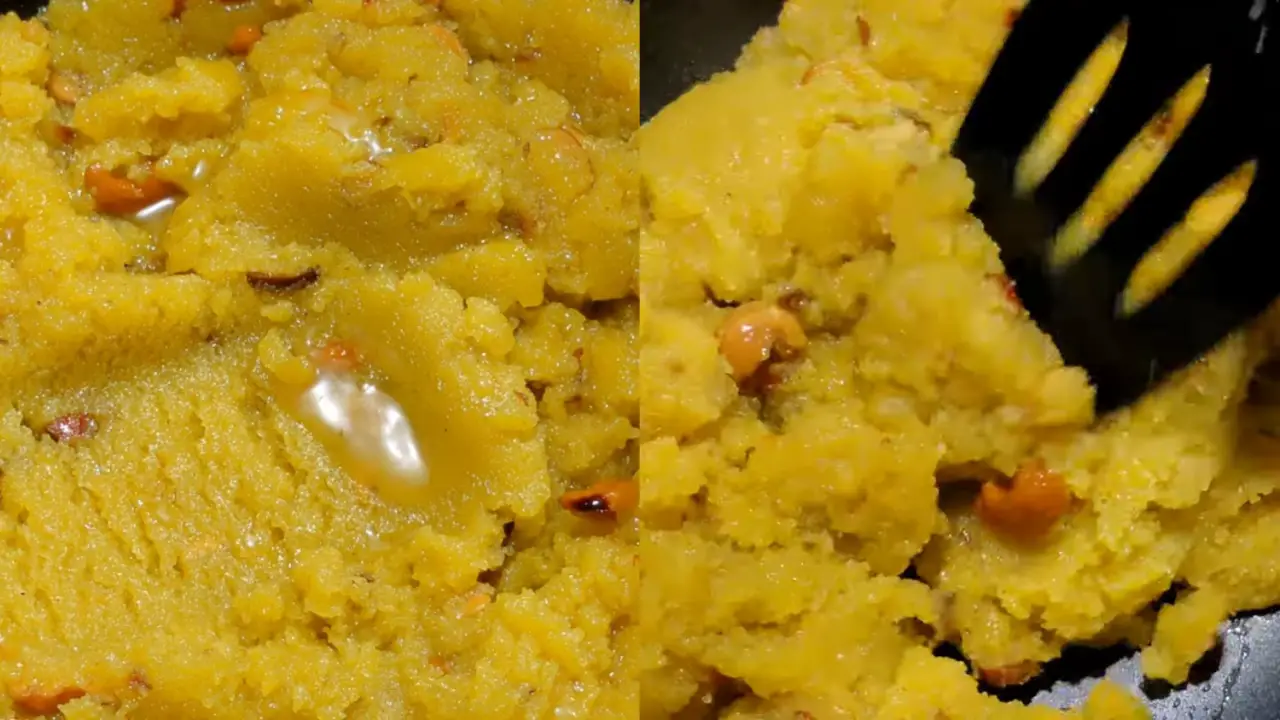
14. Suji Halwa is ready. Transfer it to a bowl and enjoy.
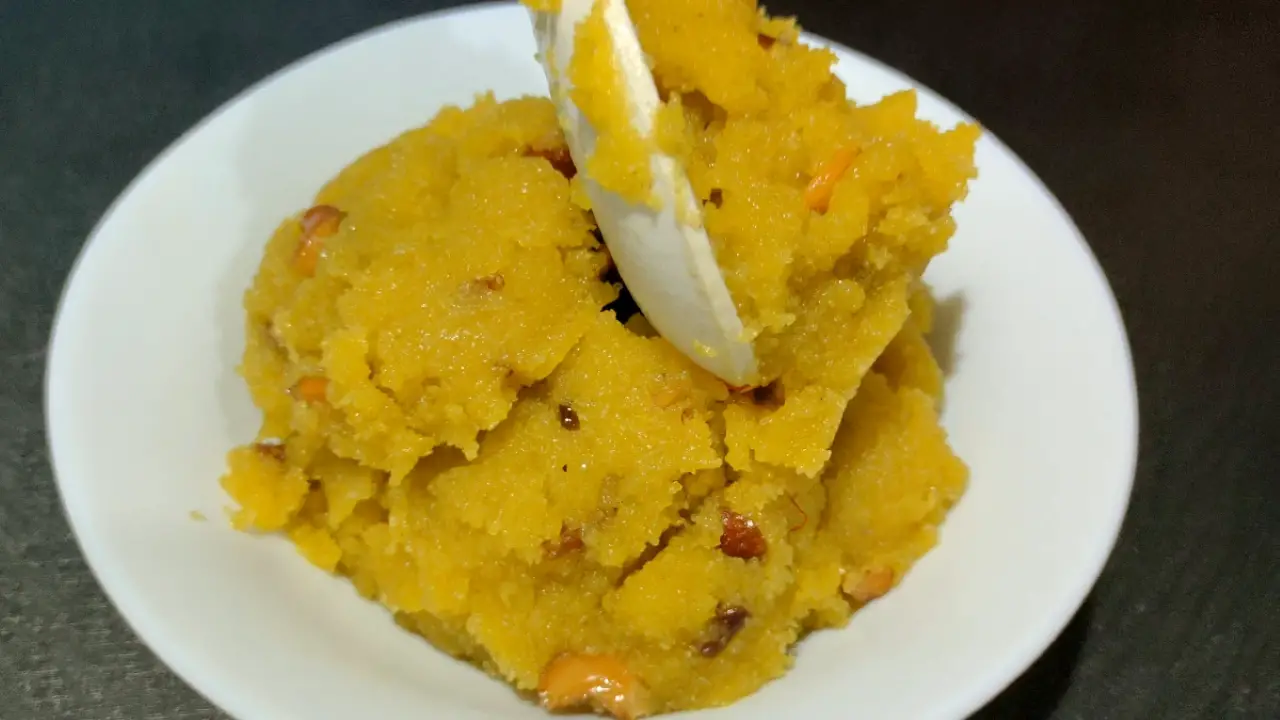
Recipe Card:
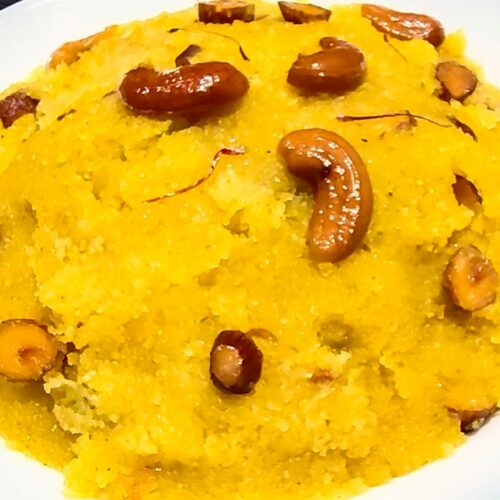
Suji Halwa (Semolina Halwa)
Ingredients
- 200 grams Semolina (fine grain)
- 175 grams Sugar
- 200 grams Ghee
- 1 tablespoon Gram Flour
- 1 pinch Saffron
- ½ tablespoon Cardamom powder
- 2 tablespoons Almond (chopped)
- 2 tablespoons Cashew (broken)
- 1 tablespoon Pistachio
Instructions
- Add 100 gms of ghee into the wok. Let it heat until hot.
- Add the suji or semolina.
- Stir and mix the semolina and ghee very well. Do not let the semolina turn red or brown while cooking. Stir it until the raw smell of semolina disappears.(Pro tip: Heat the ghee so that when you add the semolina, it becomes fluffy.)
- Stir the semolina for 1 min on low heat. The semolina will turn gooey and release the oil without any change in color.
- Add 1 tbsp besan or gram flour.(Pro tip: In the sweet shop, they use gram flour or wheat flour. Gram flour simply enhances the aroma.)
- Mix gram flour with suji.
- Add the almonds, cashews, and pistachios into the mixture. Stir everything very well. Do not fry the nuts separately.
- Take a saucepan and heat it on another gas stove to prepare the water. Pour three bowls (the same bowl containing semolina) of water and heat it to simmer in a separate saucepan.
- Add the kesar or saffron and cardamom powder. Add 1 tbsp ghee. Boil the water.
- The semolina is almost cooked; it is releasing oil. Now add the hot water slowly into the mixture and stir it at the same time. It’ll sizzle and splash.
- Embrace stirring. Gradually add the water and stir it continuously. This will demand patience. The semolina will transform from crumbly to plump and fluffy.
- Add sugar. Continue to stir until the sugar melts. Once you notice the ghee starting to separate from the halwa on the edges, turn off the heat.(Pro tip: If you don’t use saffron, add food color.)
- Drizzle ½ tbsp ghee over the halwa. Mix it well.
- Suji Halwa is ready. Transfer it to a bowl and enjoy.
Video
Notes
- Roast the semolina properly on a low to medium heat with little bit of ghee until they turn slightly golden brown in color.
- Do not add too much sugar at a time. To balance the sweetness to perfection, add a moderate amount, mix them and then taste it before adding more, if required. The dessert will taste sweet automatically as it cools down.
- To get the desired taste and flavor, always use top-quality semolina, ghee, and other spices like cardamom, saffron, or rose water.
- Do not add too much water at once. Control it carefully and stir continuously while adding to prevent lumps from forming. This will ensure proper water absorption and even cooking.
- Let the halwa rest for some time before serving so that the flavor melds perfectly and the dessert achieves the right texture. You may add little bit of warm water or milk if it becomes too thick.

